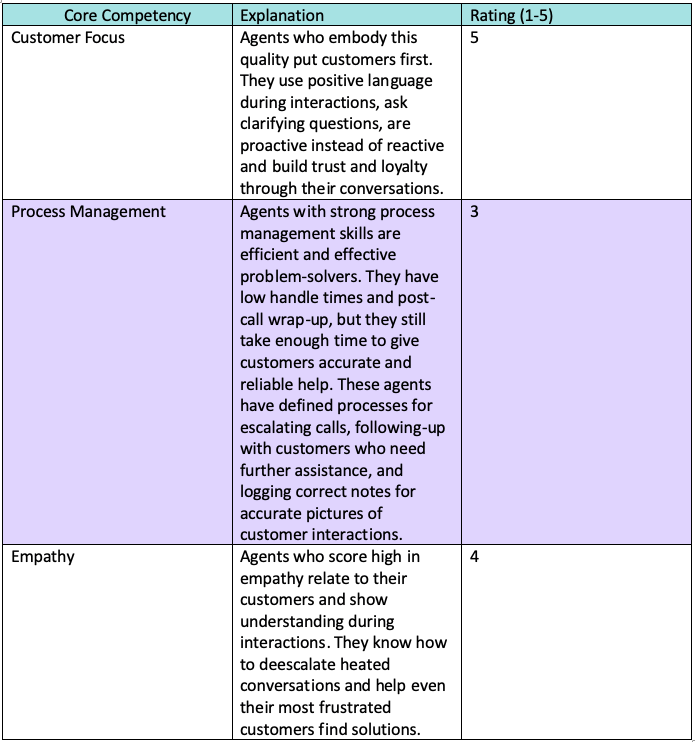
The Tactics You Need to Know to Implement 3 Key Customer Service Trends for Better Experiences in Your Call Center in 2021
American businesses risk a staggering $494 billion in revenue from poor customer care, according to the 2020 National Customer Rage Study.
With financial losses of such scale on the line, the stakes have never been higher to deliver good customer service in your call center. But it’s also never been easier to find the information you need, implement the right tools, and make incremental improvements that drive real change in your call center.
As call center trends shift and move, it’s important to keep pulse on how “good” customer service is changing, plus what you need to do to keep up.
A few weeks back, we outlined the future of customer service and talked through three major trends impacting your call center in 2021 and beyond.
- Accelerated Digital Transformations Will Put Cloud Tech at the Forefront of Service
- The Gig Economy is Reshaping the Customer Service Workforce
- As Automation Booms, So Does the Need to Upskill Your Agents
Today, we’re getting tactical. We’re diving in on what changes you can make in your call center in 2021 to align with these three trends that are here to stay.
How to evaluate tools and build resilience into your contact center.
After success moving workers home at the start of the pandemic, many business leaders realized the cost savings, inherent flexibility and productivity spikes that come with flexible work. Now, 2021 trends prove many companies are ready to make strategic business decisions to migrate their call center to the cloud.
Investments in flexible technology are afoot, and it’s important to understand how your current tools support you and how they hold you back.
Make a checklist of the current platforms you use to support your contact center, and ask yourself a few key questions to evaluate your tech.
Start with these 7 questions:
- Can your systems keep up with the new behaviors of modern customers?
- Can your platforms support your agents and maintain business continuity when you need to adjust on the fly?
- Do your vendors make it easy to scale your technology as your business needs change, or are you left hanging when you need help?
- Do your platforms integrate to share customer information?
- Can you customize how you report on agent and contact center data?
- Do agents have access to daily performance metrics?
- Can you make easy updates to your platform, like changing a call route, without waiting 2+ weeks for IT?
Look at your technology and your current contact center tools through the lens of your people – both your employees and your customers.
Here are a few questions to ask contact center agents:
- Do you have access to the customer information you need?
- How many windows do you have to use to handle each interaction?
- Can you easily transfer calls if you need to escalate?
- Can you switch communication channels mid-interaction without disconnecting the customer?
- How can we improve your training and coaching?
When reviewing your tools, your agents’ opinion is arguably the most important. Current state, agents surf through an average of 8+ screens per day and it drains their productivity. So, dig into what’s in their way and see how you can position your tools (current or future) to help.
[Download Now] See what Frost & Sullivan say are other trends are impacting the call center market
How to support a flexible workforce as the gig economy scales up.
Every holiday season, companies like Amazon and FedEx hire on thousands of seasonal workers to help with demand. And as more companies feed into the demands of customer seasonality, the need for contracted gig workers grows.
Companies like Uber have created a new model for work. One where contracted workers can sign on to work shifts that best fit their lives. And now with remote and flexible work expanding, trends tell us, this model of work isn’t going anywhere. In fact, it’s growing. So, you need to prep your contact center for a new wave of work.
The average knowledge worker has to process the equivalent of 174 newspapers of information each day. My head hurts just thinking about it.
And if that’s the case for traditional knowledge workers, imagine how much information gig workers have to absorb (AND retain). They have to remember different guidelines, rules, policies and tech stacks for each company they work for. Information overload is real, and it’s counter-productive to your contact center’s goals.
But 2021 call center trends show, the gig economy is scaling quickly and you’ll have access to a growing pool of talent to contract for your call center. So, get ahead of the curve and build policies to support these unique employees now.
Here are 10 tips to help you support gig workers and flexible work environments:
- Create guidelines to give your flex agents the guard rails they need to do their jobs.
- Document important aspects of your call center tech, like what platforms need to be open and key steps to use them, as a reference point for agents when they need help.
- Bulk up your knowledge management resources so agents have access to SOPs and common customer questions.
- Keep peer communication channels open so agents can work together to solve customer problems.
- Outline your quarterly goals and email them to every agent, so they can pin it to their desktop as a reminder of what’s expected.
- Surface your team’s top three performance metrics to each agent and show them their daily progress against those metrics. (Hey, over here! We can help with this.)
- Consolidate your customer information into a single database and serve it up to your agents in a screen pop at the start of every interaction. So, they don’t have to dig for customer history during an interaction.
- Set conditions and monitor customer conversations for trigger words like “cancel,” so managers and supervisors can jump in and lend a helping hand in-the-moment.
- Update outdated policies, call scripts and processes so your agents have the right resources to help your customers.
- Build recognition into your call center culture, so every agent feels included and encouraged, no matter where they’re working or what their schedule looks like.
[Read Next] Erase bad call center experience trends for your agents in 2021
How to upskill your agents with frequent coaching and better metrics.
The contact center roadmap shows a leap to automating more processes and interactions by 2025. As automation grows, your agent skills will need to grow, too. Bots will take some of the workload off your agents, but they’ll still have a learning curve on handling more complex, problem-solving interactions that require a human touch.
And turns out, upskilling your team falls on you, manager. The good news is, investing in your team’s growth doesn’t just benefit how your agents handle day-to-day tasks. It builds longevity into your contact center, too. Nearly 51% of agents leave their jobs because of a lack of training and advancement opportunities. Invest in your team to give your customers better experiences and to stop draining your talent pool.
Here are four ways you can upskill your contact center team:
1. Create core competencies for your team.
Map out key competencies for your agents to live by at work, like empathy, customer focus and resourcefulness. Sit down with each agent in your 1:1s and review the competencies that come with the role of serving customers.
Then, create a scale to grade each agent on the core competencies. Explain the scale to your team, and offer specific explanations of what it takes to earn each score. As you continue performance conversations, use the core competencies and the associated grading scale to Work ID areas for improvement and find room for growth, so every agent can continue to deliver better customer service.

2. Clarify agent expectations.
Your agents can’t grow their skills without first understanding (and meeting) current expectations. Set quarterly contact center goals alongside your team, so they know what’s expected of them. And, map each goal to relevant metrics. If you want to improve customer happiness and retention, but you only track efficiency metrics like Average Handle Time, your agents lose focus.
Once agents have clearly defined goals and metrics, give them access to those metrics and their daily progress. Getting better at your job starts with knowing where your skill gaps exist, so you can address them.

3. Coach often and use tangible data to support your conversations.
Don’t set goals and expectations then leave your team hanging. Check in with your agents regularly and talk through their performance. Bring metrics to each meeting for tangible proof of agent progress. Discuss what’s working, and what could be better. And, come prepared with actionable and relevant feedback for each agent.
If your agent has handle times two minutes above their peer group, address it in these conversations. But don’t just reprimand. Ask questions and seek to understand why handle times are off base. Maybe your agent is struggling to find customer data and searching for it drives up his handles times. Or, maybe he’s dealing with angry customer after angry customer and he takes his time to cool the conversation down. Use agent performance data to guide conversations, but get specific with your team to spot areas where you can step in to further growth.
4. Give agents an education budget to help them grow.
I know, budgets are lean and this feels like a tough ask. But, it doesn’t have to be.
Bake education into your salary package for each employee. Set aside funds that each agent can use to take a course on Udemy (tons are $9 or less), attend a webinar or virtual conference, or even buy books on topics related to your core competencies. Offer an amount that makes sense for your company, whether it’s $50 or $500, and give your agents guardrails for growth opportunities.
When used properly, the dividends from a small education budget outweigh the upfront costs. If investing in agent growth saves even just one agent from leaving, you add $10,000 – $20,000 back to your bottom line.


